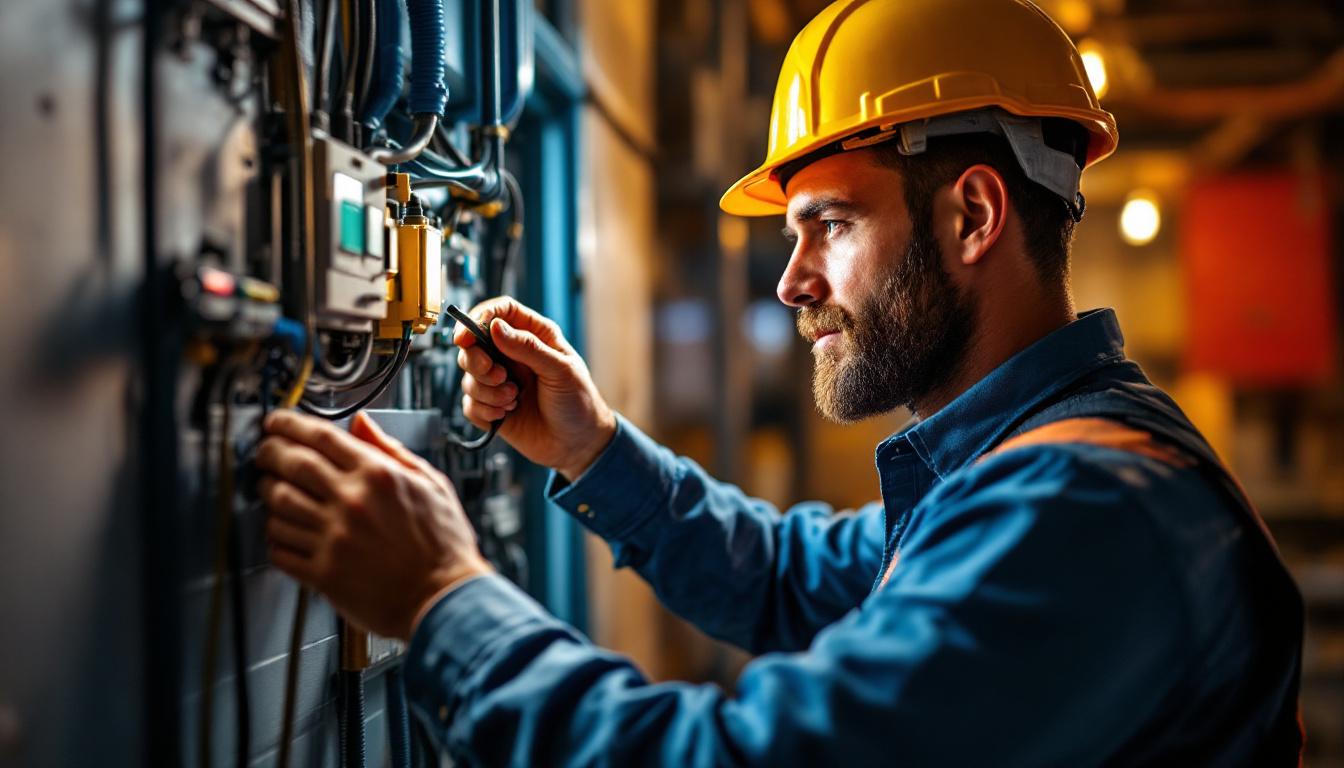
In the quest for sustainable energy solutions, the fluo lamp has emerged as a significant player in the lighting industry. Known for its energy efficiency and long lifespan, this type of lamp is increasingly being adopted by both residential and commercial sectors. Understanding the advantages, applications, and technical aspects of fluo lamps is essential for lighting contractors aiming to provide optimal solutions for their clients.
A fluo lamp, commonly referred to as a fluorescent lamp, is a type of electric light that utilizes a gas-filled tube to produce light. The lamp operates through the excitation of mercury vapor, which in turn produces ultraviolet light. This ultraviolet light then interacts with a phosphor coating on the inside of the tube, converting it into visible light. The result is a highly efficient lighting solution that consumes significantly less energy compared to traditional incandescent bulbs. In fact, fluorescent lamps can be up to four times more energy-efficient, which not only reduces electricity bills but also contributes to lower carbon emissions, making them an environmentally friendly choice.
Fluorescent lamps are often praised for their longevity, with many models lasting up to 10,000 hours or more, depending on usage and conditions. This durability means less frequent replacements, which can save both time and money over the lifespan of the lamp. Additionally, they emit less heat than incandescent bulbs, making them safer for use in enclosed spaces and reducing the need for additional cooling in warmer environments. As a result, they have become a popular choice in both residential and commercial lighting applications, from offices to retail stores.
Understanding the components of a fluo lamp can help lighting contractors appreciate its functionality and advantages. The main components include:
Fluo lamps come in various types, each designed for specific applications. The most common types include:
In addition to these common types, there are also specialty fluorescent lamps designed for specific tasks, such as grow lights for horticulture, which emit light in spectrums that promote plant growth. Moreover, advancements in technology have led to the development of energy-efficient fluorescent options that further reduce power consumption while providing the same level of brightness. As the demand for sustainable lighting solutions continues to rise, the evolution of fluo lamps remains a significant aspect of the lighting industry.
Fluo lamps offer numerous advantages that make them an attractive option for energy-efficient lighting. Their benefits extend beyond mere energy savings, impacting both environmental sustainability and cost-effectiveness.
One of the most compelling reasons to choose fluo lamps is their energy efficiency. They consume significantly less power than incandescent bulbs, often using about 75% less energy to produce the same amount of light. This efficiency not only reduces electricity bills but also contributes to lower greenhouse gas emissions, making them an environmentally friendly choice.
Fluo lamps are designed to last longer than traditional lighting options. While incandescent bulbs may last around 1,000 hours, fluo lamps can last anywhere from 7,000 to 15,000 hours, depending on the type and usage. This longevity translates to fewer replacements and reduced waste, further enhancing their eco-friendly profile.
The versatility of fluo lamps is another significant advantage. They are available in various shapes, sizes, and color temperatures, making them suitable for a wide range of applications—from residential lighting to large commercial spaces. Their ability to provide bright, even light makes them ideal for environments requiring high visibility.
Fluo lamps are widely used across different sectors, each benefiting from their unique properties. Understanding these applications can help lighting contractors recommend the right solutions for their clients.
In commercial settings, fluo lamps are often the go-to choice for general lighting. Retail stores, offices, and warehouses utilize these lamps for their bright, energy-efficient lighting. The ability to illuminate large areas without significantly increasing energy costs makes fluo lamps an ideal choice for businesses looking to reduce overhead expenses.
Homeowners are increasingly turning to fluo lamps for their lighting needs. Compact fluorescent lamps (CFLs) are particularly popular for their ease of installation and compatibility with standard fixtures. With a variety of color temperatures available, homeowners can choose the perfect ambiance for their living spaces, from warm and cozy to bright and invigorating.
In industrial settings, fluo lamps are often used in factories and warehouses where high-intensity lighting is required. Their durability and efficiency make them suitable for environments with high ceilings and extensive operational hours. Additionally, their ability to withstand vibrations and temperature fluctuations adds to their appeal in such demanding applications.
For lighting contractors, understanding the technical aspects of fluo lamps is crucial for effective installation and maintenance. Several factors need to be considered to ensure optimal performance and longevity.
Fluo lamps require a ballast to regulate the current flowing through the lamp. There are two main types of ballasts: magnetic and electronic. Magnetic ballasts are older technology and can be less efficient, while electronic ballasts offer better energy efficiency and improved performance. Selecting the right ballast is essential for maximizing the lamp’s lifespan and efficiency.
Color temperature and Color Rendering Index (CRI) are important factors that influence the quality of light produced by fluo lamps. Color temperature, measured in Kelvin (K), indicates the warmth or coolness of the light. A lower Kelvin value (around 2700K) produces warm light, while higher values (5000K and above) produce cooler, daylight-like light. CRI measures how accurately colors are rendered under the light source, with a higher CRI indicating better color accuracy. For most applications, a CRI of 80 or above is recommended.
While fluo lamps are more energy-efficient than traditional lighting, they do contain small amounts of mercury, which poses environmental concerns if not disposed of properly. It is essential for contractors to educate clients on the importance of proper disposal and recycling of fluo lamps to mitigate environmental impacts. Many communities offer special recycling programs for hazardous waste, including fluorescent lamps.
Proper installation and maintenance are key to ensuring the longevity and efficiency of fluo lamps. Lighting contractors play a vital role in this process, guiding clients through best practices.
When installing fluo lamps, it is important to follow manufacturer guidelines to ensure optimal performance. Here are some tips for successful installation:
Regular maintenance is essential for keeping fluo lamps in good working condition. This includes:
As technology continues to evolve, the future of fluo lamps looks promising. Innovations in lighting technology, such as LED advancements, may influence the market dynamics, but fluo lamps will likely remain an important option for energy-efficient lighting.
The integration of fluo lamps with smart technology presents exciting possibilities. Smart lighting systems can enhance the functionality of fluo lamps, allowing for remote control, dimming capabilities, and automated lighting schedules. This not only improves energy efficiency but also enhances user convenience.
Ongoing research in lighting technology aims to improve the efficiency and performance of fluo lamps. Innovations may include new phosphor materials that enhance light output or reduce energy consumption further. Such advancements will ensure that fluo lamps continue to be a viable option for energy-efficient lighting in the years to come.
Fluo lamps represent a significant advancement in energy-efficient lighting, offering numerous benefits that make them a must-know for lighting contractors. Their energy efficiency, longevity, and versatility make them suitable for a wide range of applications, from residential to industrial settings. By understanding the technical aspects, installation practices, and future trends of fluo lamps, contractors can provide informed recommendations to their clients, ensuring optimal lighting solutions that align with sustainability goals.
Ready to harness the benefits of fluo lamps for your next lighting project? Look no further than LumenWholesale for a comprehensive selection of energy-efficient lighting solutions. Our spec-grade products are designed to meet the highest industry standards, ensuring you deliver reliable and high-performance lighting to your clients. With unbeatable wholesale prices and the convenience of free shipping on bulk orders, LumenWholesale is your go-to source for premium lighting without the premium price tag. Elevate your lighting game and discover the best value in wholesale lighting today.

Discover top strategies for heavy duty switch installation from lighting contractors, boosting safety, efficiency, and durability—essential insights to elevate your projects today!.

Explore the advantages and drawbacks of Type G lamps for lighting contractors.

Discover the essential insights lighting contractors need to know about low voltage post lanterns.

Discover the ins and outs of low profile can lights with our comprehensive guide tailored for lighting contractors.